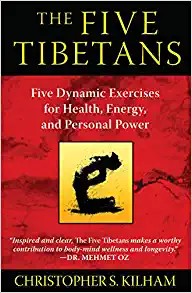Remembering Who We Are (part two)
by Nowick Gray
Greenwash: None Dare Call it Democracy
Pre-2020, the Gulf Islands between Victoria and Vancouver, BC took pride in holding one of the only Green Party ridings in Canada. Residents here shared a majority voice in advocating for wildlife and the environment.
What a difference a year makes.
 Already suspect for the ties between “Green” policy and globalist control agendas under cover of a “climate emergency,” the Green Party has shown a shocking lack of leadership in health policy by backing the Big Pharma agenda under cover of a bogus pandemic.
Already suspect for the ties between “Green” policy and globalist control agendas under cover of a “climate emergency,” the Green Party has shown a shocking lack of leadership in health policy by backing the Big Pharma agenda under cover of a bogus pandemic.
Recently I sent a letter to my Green MP Elizabeth May with the subject “Please do everything you can to make sure the COVID-19 vaccine is purely voluntary” (never mind that it’s not even a vaccine but a genetic experiment). I had signed my name to a letter template citing the various risks and infringements posed by this historic, potentially genocidal scam.
I received a worse-than-form-letter reply from Elizabeth May’s office with the opening lines: “Thank you for writing to call for access to vaccines in developing nations. I agree that the pandemic will keep hurting us at home until we end it everywhere.” The letter ends with the equally inappropriate closing: “Thank you again for your advocacy. I would be happy to raise the issue of vaccine allocation with my caucus. It is an honour to serve as your Member of Parliament.”
Gaia only knows what leverage the globalists have over the hearts of our erstwhile green and democratic representatives in government. In the meantime we can nurse with nostalgia the promise the Greens once held for a sane, healthy, and natural world.

The Mind Virus that Ate the World
Columbus: “With fifty men we could enslave them all and cause them to do anything we desire.”
Remember what it was like to live by hunting and gathering and subsistence farming? Probably not.
The fingerprints of wetiko [AKA the mind virus]-like beliefs can be traced at least as far back as the Neolithic revolution, when humans in the Fertile Crescent first learned to dominate their environment by what author Daniel Quinn calls “totalitarian agriculture” — i.e., settled agricultural practices that produce more food than is strictly needed for the population, and that see the destruction of any living entity that gets in the way of that (over-)production — be it other humans, ‘pests’ or the natural environment — as not only legitimate but moral. —Seeing Wetiko: On Capitalism, Mind Viruses, and Antidotes for a World in Transition, by Alnoor Ladha,Martin Kirk (2016)
Unless we have gone to the far North or the Amazon, we have likely never encountered any society but our own global parasite known as neoliberal capitalism—the mind virus’s own self-perpetuating creation. Its single mission, it seems, is to conquer the natural world, demonstrating such with
its insatiable hunger for finite resources; its disregard for the pain of groups and cultures it consumes; its belief in consumption as savior; its overriding obsession with its own material growth; and its viral spread across the surface of the planet. It is wholly accurate to describe neoliberal capitalism as the primary cannibalizing force of life on this planet. It is not the only truth — capitalism has also facilitated an explosion of human life and ingenuity — but when taken as a whole, capitalism is certainly eating through the life-force of this planet in service of its own growth.
A commenter (Ray Songtree) on the above article warns of the future prospects of this dark force, which seems prophetic now five years later:
People infected with Wetiko call progress “Singularity.” They want one mind, one economy, one government, one purpose. The goal is one global slave state controlled, not by humans with hearts, but by artificial intelligence… default software connected to electric fences and armed drones. AI can never be self conscious, but it can be programmed to self replicate and defend itself.… What matters is whether you support local farmers or the bio-tech plague. Organic or Wetiko? What matters will be how you vote with your wallet and how soon you leave the city. Waking up will mean unplugging.
“I’d Love to Change the World”
We’ve got to get ourselves / Back to the garden. —Joni Mitchell, “Woodstock”
The lead single from the 1971 album by Ten Years After, A Space in Time,sums up the spirit of the age, among my generation. What became of this revolutionary impulse, which charged every aspect of cultural life? Did we change the world for the better? Did we diverge into individual paths of success as we each came to define it? Or did we simply give up?
What became of the nonviolent protest movement, active in every city and campus? Where do we stand today, fifty years after, with prospects for positive social change and a sustainable future?

Where once broad-based coalitions could move millions to take to the streets, now we are sedated and seduced by digital distraction; divided and subdued by fear and fake news; canceled by mandates, cowed by peer pressure, conned into submission.
Protest has been commandeered as a tool of power from the top, orchestrated to occupy the public space and weaponize demographics such as race or religion to divide and conquer. Whether in the USA or abroad, “nonviolent regime change” may be the favored contemporary brand, for PR effect; but the bottom line remains, “regime change.”
The US goal in the Arab Spring revolutions was to replace unpopular despotic dictators while taking care to maintain the autocratic US-friendly infrastructure that had brought them to power. All initially followed the nonviolent precepts [Gene] Sharp outlines in his 1994 book From Dictatorship to Democracy. (Gayle Kimball, “ U.S. Government Influence on Global Uprisings”)
Following Sharp’s role in the ‘color’ revolutions in Eastern Europe and the attempted coup against Hugo Chavez in 2002… in Libya, Syria and Yemen, the US and their allies were clearly prepared to introduce paid mercenaries when their Sharpian ‘revolutions’ failed to produce regime change” (Kimball).
Sharp the scholar, both prophetic and pragmatic, turned lackey of empire. With his “neoliberal nonviolence… he rationalized the weapons of the weak to advance the interests of the strong” (Marcie Smith). Bolivia serves as a more recent example of the color revolution model still in play. Not to mention establishment sponsorship of Antifa and Black Lives Matter, pushing the envelope of nonviolence so as to invite a violent response from their targets… and either way, to get the troublesome, unpredictable, and mostly uncooperative “president” out of the picture.
*
Flashback to 1980, Gene Sharp was one of my guiding lights, in the theory and practice of nonviolent action for social change. His earlier masterwork, The Politics of Nonviolent Action(1973) combed the annals of real history and compiled hundreds of successful tactics of nonviolent resistance and advocacy, and put forward strategic principles by which such movements succeed. He was a natural mentor to the disarmament and later environmental movement. Fast forward back to the future where we are now, and nonviolent struggle has been rebranded and repackaged as manufactured rebellion; staged and weaponized as a narrative device; and delivered as a species of fake news.
This manipulation of popular struggle, and of mass perception, takes place today in a context where “the news” has become just another program (and form of mental programming) competing for viewership. Control and consolidation of media networks and narratives mean power to define not only what is “newsworthy,” but what is truth itself.
Telling the mass media to “just do their jobs” and report the news is like bursting into a shoe factory yelling “Just do your jobs and start manufacturing dentures!” Their job is not to report the news, their job is to manipulate public perception for the benefit of the media-owning class. —Caitlin Johnstone, “The Mass Media Will Never Regain the Public’s Trust”
While color revolutions are staged under global spotlights, genuine protests for anti-imperial causes are excluded from view: banned or disbanded, censored or spun, and if all else fails, ignored. True grassroots movements for freedom and accountability are kept in the wings of the stage, outside the circus tent of trick animals and human chimeras.

The other side of the Revolution—for the country dog instead of the town dog—was a more doable proposition: to tend one’s own garden. Woodstock symbolized a great paradigm shift: from the “American Dream” of endless consumption, to “the simple life,” returning “back to the land.” What became of that greener dream, for a generation and for the boomers who made it their guiding vision?
Simplify, simplify, simplify. —Thoreau, Walden
Well, we Boomers got older, one way or another, to the point where “Bed Bath & Beyond” kind of covers what’s left of our simple pleasures in life. Back then the main discovery was that simple living is no simple matter; it’s hard work living off the land and just as hard creating sustainable social community.
For the seeker of simplicity of any generation, it’s worth remembering that simplicity requires its own cultivation, its pruning of activity of body and mind to what is most vital. (Think “essential services,” but in a personal, fully informed consent kind of way).
A more natural life doesn’t necessarily mean we should all grub for insects and drink bark tea, after shooting all the deer and rabbits. It doesn’t mean working dawn to dusk behind a combine or tractor, shoveling shit and husking beans. Or it could, up to a point; but you have to respect your own limits—individual and collective, environmental, emotional, and spiritual.
What can be more simple than simplicity itself? Starting from scratch, and working back to balance.
To that end, I can recommend…
5 Simple Daily Practices for the Path Ahead

When I went to India the first time in 2008, I wasn’t looking for a guru. But one day I was playing flute by a river when I noticed a man washing clothes. I told him I hoped I wasn’t disturbing his peaceful day. He shook his head. “Not a problem.” It turned out he was a traveling cloth merchant, and we talked a bit about Indian spiritual practice. He shared with me these first two simple exercises, which I’ve done more or less consistently ever since. They are good minimal tuneups for body and mind.
1. Stretch. Before getting out of bed in the morning, lean over to touch your toes three times.
2. Sixty/forty breathing. One of the simplest forms of meditation is to focus on the breath. Easy enough, momentarily. Harder to sustain, with a restless wandering mind. Which is why this extended counting focus helps. Three rounds, and each round goes like this:
-
-
- Inhale, hold, and count to sixty (6 x 10).
- Exhale, hold, and count to forty (4 x 10).
- Take two normal breaths.
-
3. The Five Tibetans  For about the same dozen years I’ve been doing a daily series of exercises that are a cross between yoga poses and calisthenics. They are outlined in a slim book by Christopher Kilham, The Five Tibetans. The five poses/movements, each repeated twenty-one times, only take five minutes to complete. They provide not only a healthy stretch to all parts of the body, but also a cardo wakeup boost. I finish off with an extra 21 pushups (or 25, or whatever feels right for you). And instead of the full dizzying dervish spin of the Tibetans, I simply swing arms around while standing in place, twenty-one times, to loosen up after the pushups.
For about the same dozen years I’ve been doing a daily series of exercises that are a cross between yoga poses and calisthenics. They are outlined in a slim book by Christopher Kilham, The Five Tibetans. The five poses/movements, each repeated twenty-one times, only take five minutes to complete. They provide not only a healthy stretch to all parts of the body, but also a cardo wakeup boost. I finish off with an extra 21 pushups (or 25, or whatever feels right for you). And instead of the full dizzying dervish spin of the Tibetans, I simply swing arms around while standing in place, twenty-one times, to loosen up after the pushups.
4. Twenty-minute sit Last thing in the morning practice is the twenty-minute sit. The essence of meditation is simply “sitting quietly, doing nothing.” Of course, the mind wants to keep busy, so you can keep it quiet by the sixty/forty breathing exercise if needed. Or variations thereof. You can sip tea or even coffee if you like. You can sit in full lotus, half-lotus, a chair, a hammock, a morning bath. The key is to keep it simple, quieting body and mind, clearing and refreshing for a more open-ended future.
5. Walking in nature Walking in nature is a good daily practice, at any time of day. Even in a city neighborhood, you can walk with awareness of the nature still around: sky (when free of chemtrails!), trees, birds, flowers, bees, grass. Better yet, find a trail through woods or by a lake or seashore. Again, focus on the breath… the simple joy of fully breathing, with live energy flowing through your whole body and being. Your space is open for untangling creative or personal dilemmas, or giving simple physical refreshment. It can be a “walking meditation” as you are able to still the mind and just be open, present… and free.
—
image credits:
(feature) Shaman: Ricardo Chargingbear
Immunity: Jimbob
Hiraeth: facebook
Protest: David Molko, CTV
Sick/Healthy: Florida Civil Rights Coalition
Yoga: Nowick Gray
Tibetans: Christopher Kilham, Amazon
—
Nowick Gray writes from Salt Spring Island, BC. His books of genre-bending fiction and creative nonfiction explore the borders of nature and civilization, imagination and reality, choice and manifestation. Connect at NowickGray.com to read more. A regular contributor to The New Agora, Nowick also offers perspectives and resources on alternative culture and African drumming, and helps other writers as a freelance copyeditor at HyperEdits.com. Sign up for the “Wild Writings” email newsletter for updates and free offers.
—-



 nowickgray.com
nowickgray.com







